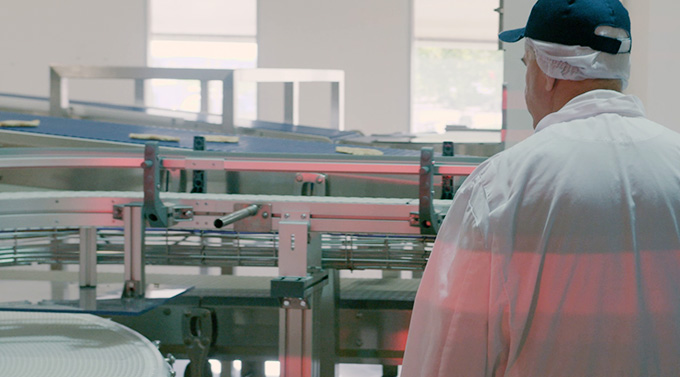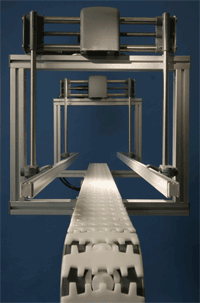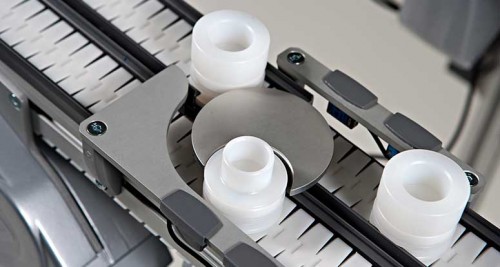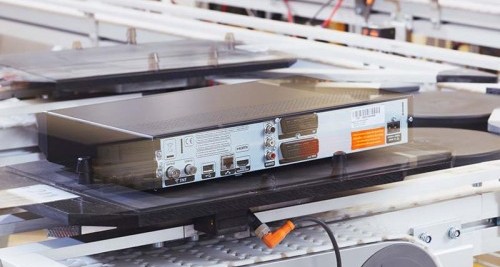
As the market changes, so does the product demand, which in turn affects your production lines. When introducing a new product, extending a production line or increasing a production mix, changeovers need to be fast and efficient. The more you can reuse your original production line investment, the better. In this blog article, I will describe how you can minimize changeover time and at the same time get a long-term yield on your investment.
Changeover in the fast moving consumer goods industry
In the fast moving consumer goods industry (FMCG), changeovers are becoming more common as product ranges are increasing due to more customizing and the increase of private branding. More retailers want to offer a variety of products, but in smaller batches. However, producing a variety of products also means producing a variety of packaging and labels. Consequently, changeovers have to be carried out every day, or even more often – and they must not be time-consuming.
In production, every lost minute is a loss of income
Investing in new production lines to be able to produce more is a cost. Instead, if you could keep the number of production lines down, and improve the production efficiency, it would give you a great economic advantage. With fast and efficient changeovers, you maintain a flexible production, meaning producing smaller production batches and without having to build finished goods warehouses. You can offer customers more flexible solutions and faster deliveries, while at the same time keeping inventory costs down.
Converting a production line in as little time as possible
 Changeover time may vary depending on what requirements the customer has on the product. Often you need to remove products and materials and clean the line components to be able to adjust the equipment. The changeover may include everything from changing only the label of a package, to adjusting all components of a production line requiring a complete disassembly of the equipment. Sometimes it is necessary to change from one machine to another to accommodate the product. This might be the case for secondary packaging, where some customers want their products delivered in cartons, and others in plastic crates in different sizes.
Changeover time may vary depending on what requirements the customer has on the product. Often you need to remove products and materials and clean the line components to be able to adjust the equipment. The changeover may include everything from changing only the label of a package, to adjusting all components of a production line requiring a complete disassembly of the equipment. Sometimes it is necessary to change from one machine to another to accommodate the product. This might be the case for secondary packaging, where some customers want their products delivered in cartons, and others in plastic crates in different sizes.
How to minimize changeover time in production
Minimizing changeover time can be done in different ways. When it comes to the actual transport system, a certain range of products can be run with the same setup. But when the size or shape of the product begins to vary too much, adjustments are required.
Using a puck or a pallet conveyor to avoid making adjustments to the transport system
One common solution is to use a puck. A puck is a carrier that stabilizes products on the conveyor line. The individual product is placed in the standard puck enabling you to switch products without having to make any adjustments to the transport system.
The downside, however, is that you will end up having lots of pucks to take care of once the products are picked up, and return back to the start of the line. You may also need pucks for different products. In the industrial manufacturing industry, where heavier products often are handled, it is not unusual to use a pallet conveyor to minimize changeover time.
The pallet has the same function as a puck. Pallet conveyors can handle products in different sizes and weights.
Using guide rail components to accommodate many different product sizes and shapes

Another way to minimize changeover time is to use adjustable guide rail components. Guide rails and guide rail brackets guide the products and make it possible to accommodate many different product sizes and shapes. The width of the guide rail brackets can then be adjusted manually (by adjusting each bracket), mechanically or electrically (through centralized changeover) or automatically (by using an electronic engine control decentralized on every guide rail bracket).
Advantages of automated solutions and automated production flows
Using pucks, pallets and guide rail components are all valid tools to help minimize changeover time. The more you automate your production flows, the less time you need to spend on changeovers – before (preparation), during (conducting) and after (follow-up). There are a number of automated solutions that can be integrated to a production line to minimize changeover time. One example is using a robot for end-of-line palletizing, another is using pick-and-place robots. As robots, in general, are flexible and have the ability to reprogram for product changes, or re-install in other applications within a factory, they most certainly ensure a long-term yield on your original investment.
I hope this blog article was relevant and valuable to you! If you enjoyed reading it, please let me know by sharing in social media. Do you have any questions about automated production flows? Please visit our website or feel free to contact me!






Leave a Reply